Why is My Chicken Rubbery? – Causes and Solutions
We’ve all asked the question at some point: Why is my chicken rubbery? Here, we’ll tell you everything you need to know about how to keep rubbery chickens off your dinner table and out of your life.If you’re frustrated at your failed attempts to avoid rubbery chicken, it’s probably time for a little help. What can be so confusing is that you may normally have a smooth chicken cooking experience and turn out a fine chicken dish again and again. But then, suddenly, there it is again — rubbery chicken! Why?! Let’s finally demystify the rubbery chicken.Reading: why is my chicken rubbery
Why is My Chicken Rubbery?
Contents
By now, you may be able to prepare a dozen different chicken recipes without even Googling about it anymore. So, what makes chicken only sometimes rubbery? There are multiple possibilities for the cause of your rubbery chicken surprises — and — wait for it — there may be different causes at different times.There are two temporal possibilities for the cause of a chicken to be rubbery: It was already rubbery before it arrived at your house, or it became rubbery after it got there.Either way, there are simple, easy solutions to avoid some of these problems. Others are not within your control. Fortunately, in the majority of cases, you can prevent a rubbery chicken from appearing.NOTE: There are some recommendations to beat and squeeze the larger parts until they appear to be the same thicknesses as the smaller parts. But, this is ill-advised. The density of the meat remains the same, regardless of how much you pound on it, so the cooking time differential is negligible between a chicken breast before or after it has been hammered. Tenderizing chicken by pounding it can soften the meat, for purposes of capturing the right consistency for various dishes, but it does not significantly alter the necessary cooking time.Nobody should be forced to abandon a lovely dinner table and head for carry out due to rubbery chicken. So, here are the known reasons why the problem can occur, and solutions to help you prevent a rubbery chicken from ever again becoming an unpleasant surprise at meal time.Here’s a video on how you can avoid mistakes while cooking chicken:
Causes and Solutions for Rubbery Chicken
There are a number of reasons why chicken sometimes has a rubbery, unpleasant texture and does not taste good to eat. Here are the most common causes of rubbery chicken and the easy solutions for each one:
Overcooking
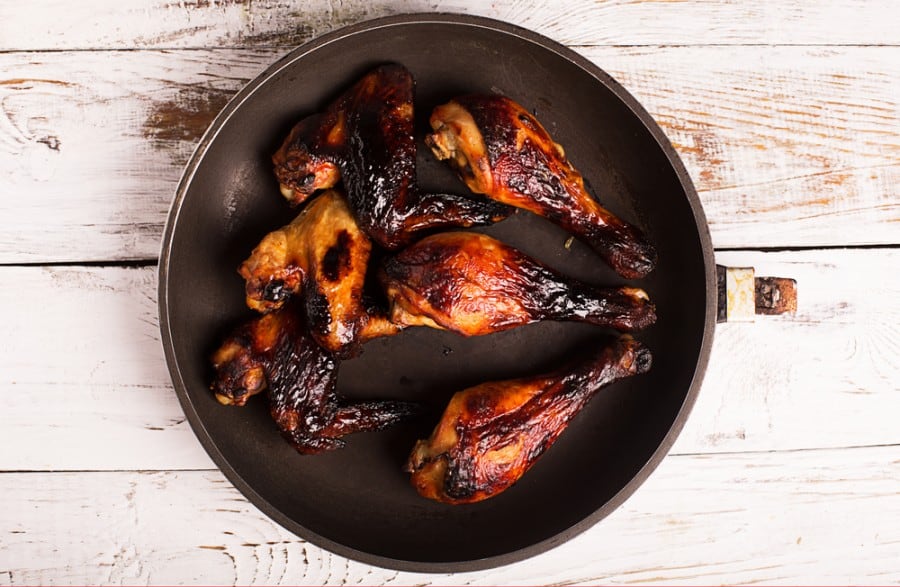
Frying — How to avoid rubbery fried chicken
When frying chicken, the poultry should be cooked quickly using high heat. Of course, chicken parts are not all the same thickness, so it is a key challenge in preparing the chicken to make sure that all parts are cooked evenly throughout.Read more: Why are instagram usernames lowercaseRemoving smaller parts that are done faster from grease that still has uncooked thicker parts still cooking in it is not an option. Why? Because that action would be a health hazard, due to the high potential for cross-contamination from the grease that still contains chicken parts that are not fully cooked. So,Use one of these options to ensure even cooking of all chicken parts:
- Cut larger, thicker parts like breasts and thighs to sizes that are more similar to the smaller parts.
- Cook larger and smaller parts separately, either by moving smaller parts to a lower heat source and cooking them separately.
- Cook larger parts first, as they will hold their heat and stay fresher longer while they’re waiting for you to cook the smaller parts.
Baking — How to avoid rubbery baked chicken
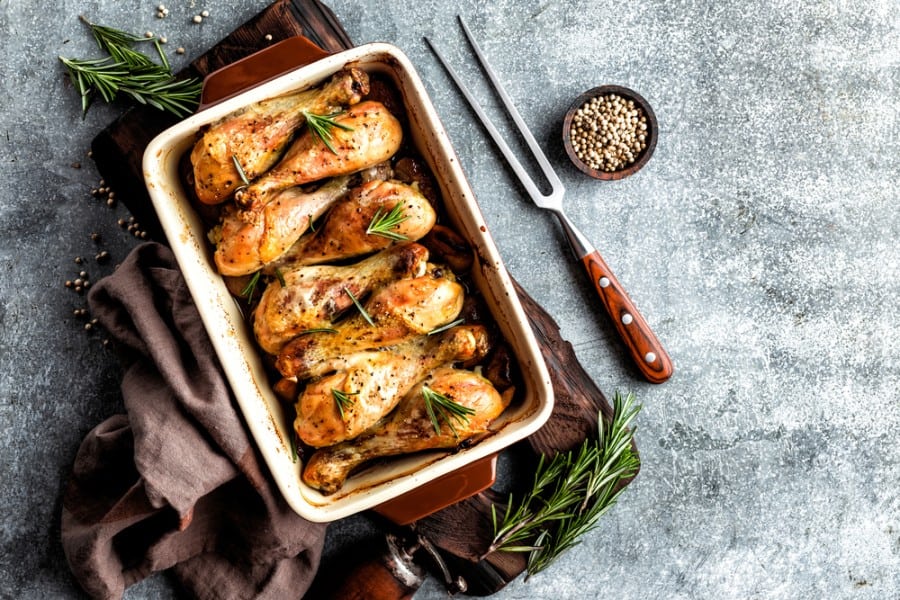
- Cut into one or more points at the bone in the deepest center part of the breast and thigh, and examine those areas. Look for blood or pink meat near the bone. If there is no sign of blood or uncooked meat at the bone, then the chicken is probably fully done.
- Another option is to go all out and use a meat thermometer to monitor one of those same deep center areas for an official read out of internal temperature. When the chicken center reaches 165 degrees, then it is fully cooked. Use the cooking chart from the USDA Safe Minimum Internal Temperature Chart, for safe cooking temperatures for various foods, including chicken.
Grilling — How to avoid rubbery grilled chicken
With grilling chicken, you have the advantage of greater control over which chicken parts are exposed to higher or lower heat on the wide grilling surface, and you can take parts out at separate time intervals as the smaller parts are finished cooking and you’re waiting for the thicker parts to become fully done.Still, overcooking and undercooking chicken are arguably more common problems in grilling than in any other method of cooking, often leaving grilled chicken dry and/or rubbery. Regulating heat in a grill, even a gas grill, and especially in charcoal grill is more challenging than cooking on a stove burner or in a kitchen oven. The solution?Focus on these fundamental instructions for grilling chicken:
- Be consistently attentive to how each piece of chicken is progressing during the entire grilling process, no matter how much more interesting everything else is that is happening in your backyard.
This is really the only solution to ensuring that some pieces are not overcooked and burned on the skin and others are not undercooked and unsafe to eat. In either case, you’re likely to have rubbery chicken that is inedible just based on bad texture and flavor if you do not pay full attention to managing heat under chicken while grilling.
- Use barbeque sauce or beer to saturate chicken meat during cooking, and consider soaking the chicken in additional BBQ sauce, especially if it is too dry from grilling.
Here’s a delicious grilled chicken recipe you can’t miss:
Boiling — How to avoid rubbery boiled chicken in soup
People often cook chicken much longer than necessary when making soup. Remember that the interior of the meat pieces must be 165 F in order to be fully cooked. The pieces also must not be overcooked. Even in soup, under or overcooking causes rubbery chicken.Here’s the easy solution:
- Add small, thin chicken slices, shreds, cubes, or other pieces into the soup only about 15 to 20 minutes before it is finished and ready for serving.
- Just as with any other way of cooking chicken, make sure the cooking temperature and time are appropriate for producing fully cooked, but not overcooked chicken. Cooking time and temperature can vary depending on how many other ingredients are in your soup, what kinds of ingredients those are, and how much soup volume you are making. So, follow the recipe to ensure you’ve got the time and temperature right.
How Do You Soften Overcooked Chicken?
If your baked chicken is overcooked, you may be able to make it more tender by saturating it with broth Slice the overcooked chicken into thinner pieces, and place them in a baking dish. Pour hot chicken broth from the bottom of the pan you used to bake the chicken. Or use packaged broth, if there is not enough broth remaining from baking the chicken. Heat the chicken and broth in a preheated oven for ten to fifteen minutes at low temperature. Serve promptly.
Undercooking
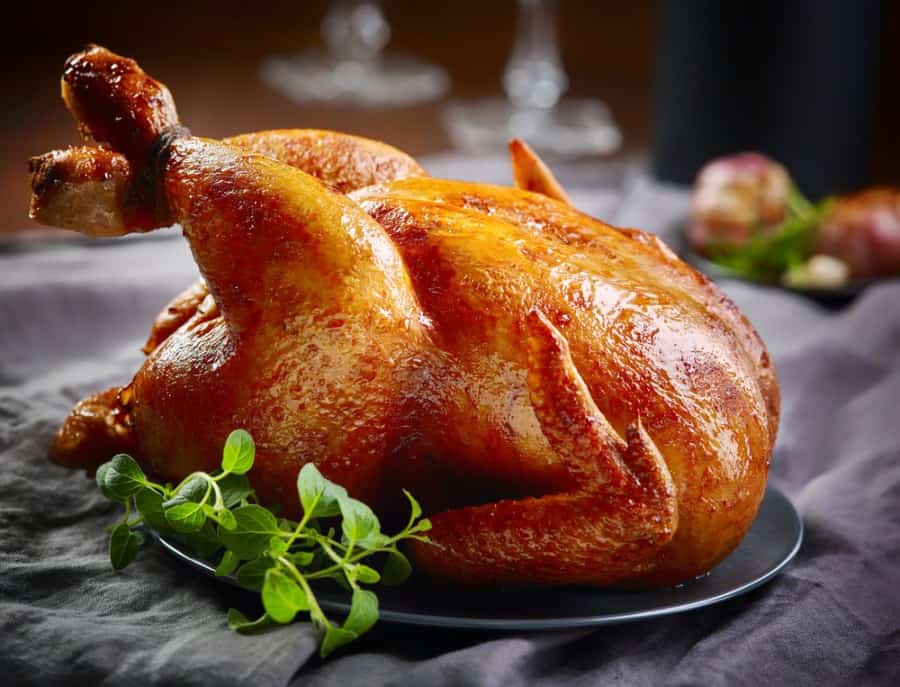
- Check at the bone of the deepest part of the breast and thigh, to ensure there is no blood or uncooked meat at or near the bone.
- Use a meat thermometer to ensure that the chicken meat in the deepest parts are at least 165 F. Continue cooking until the chicken reaches that temperature throughout.
Insufficient Moisture
A lack of sufficient moisture in chicken can be due to overcooking, but sometimes a chicken can just show up at your house already rubbery. Chicken is a very lean poultry. The low fat property of this fowl can cause the meat to be too dry. Moisture can become depleted in chicken at any time. You can’t pump moisture back into it. So, what to do?To help prevent chicken from losing too much moisture prior to cooking:
- Keep the chicken covered with foil or plastic wrap until you begin cooking.
- Before cooking, soak the chicken in heavily salted water. Soaking in salt water helps break down some of the chicken’s muscle fibers, to make it more tender. The salt brine absorbs into the chicken meat, helping to prevent dryness. Or, marinating in one of the countless other available marinades may be helpful.
- Partially fill a sauce pan with water, wine, broth, or other preferred liquid solution. Add some butter, and add the chicken. Heat the contents of the pan using medium cooking temperature until the chicken is heated throughout. Heat no longer than 10 minutes after the fluid reaches medium temperature.
NOTE: When shopping for chicken or other poultry, it makes sense to ask about farming conditions in which the animal was raised. Chicken that is better fed and generally managed is more likely to have a better meat texture and flavor.
Woody Chicken Breast
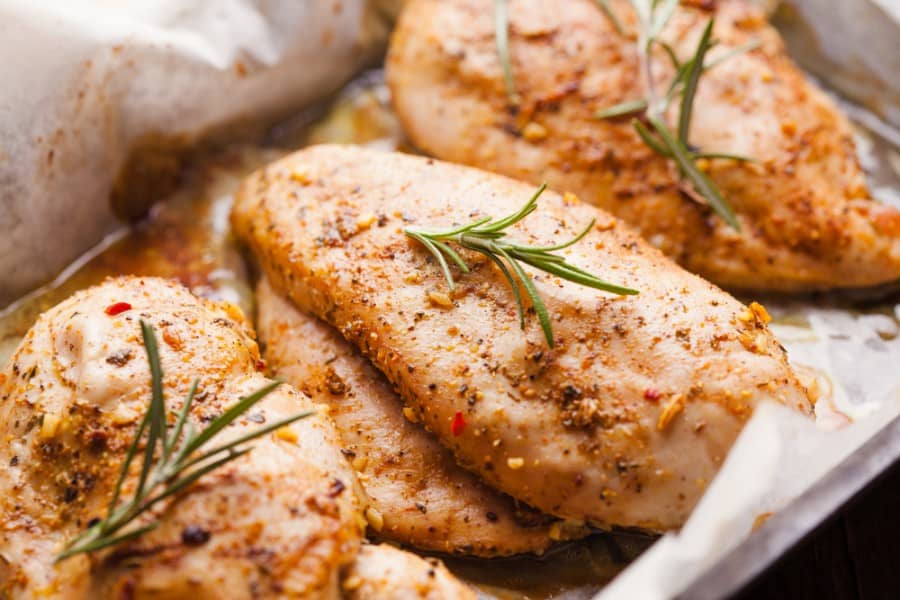
- When shopping for chicken to cook, feel the breast area for unusual hardness. Sometimes you can even get a sense of this difference between frozen chickens. A woody chicken breast feels harder than others, and it may feel lumpy.
White Striping
White Striping refers to a sort of wood grain appearance across the surface of chicken breasts in the same direction as the grain of the muscle tissue. It’s a problem of meat quality. White striping reduces nutritional value and taste quality. It causes chicken meat to be tougher and higher in fat. The precise cause of white striping is so-far unclear. However, it is believed that growers’ efforts to produce more robust animals have led to some chickens with increased and excessive muscle density.How can you avoid buying chicken with white striping in it?
- Inspect skinless chicken breast meat at the supermarket, before you buy.
- Ask your grocer about the farming conditions under which the chicken was raised. Better conditions tend to lead to higher chicken meat quality, in terms of nutritional value, meat texture, and taste.
Is Rubbery Chicken OK to Eat?
Rubbery chicken is generally safe to eat unless the cause of the rubbery texture is undercooking.
Now You Know
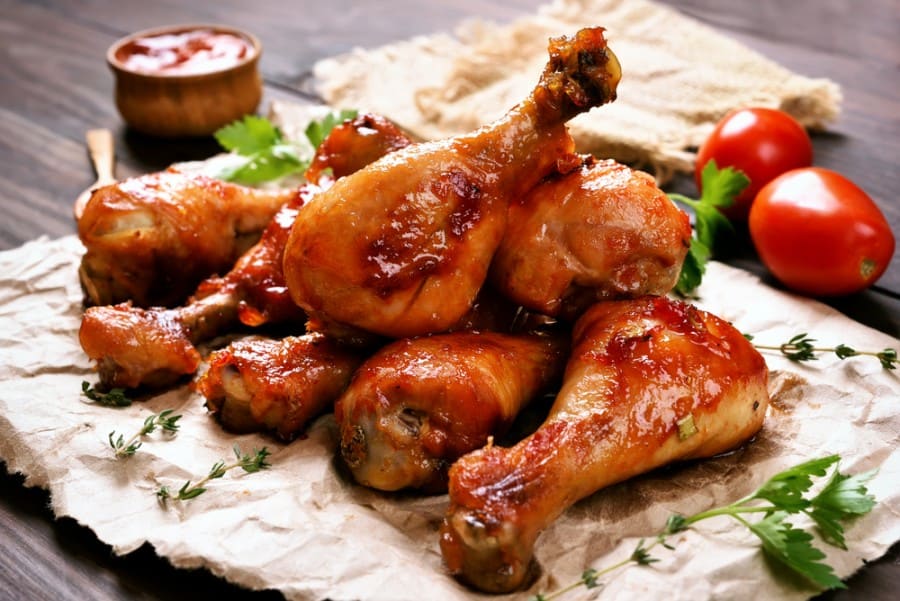
Last, Wallx.net sent you details about the topic “Why is My Chicken Rubbery? – Causes and Solutions❤️️”.Hope with useful information that the article “Why is My Chicken Rubbery? – Causes and Solutions” It will help readers to be more interested in “Why is My Chicken Rubbery? – Causes and Solutions [ ❤️️❤️️ ]”.
Posts “Why is My Chicken Rubbery? – Causes and Solutions” posted by on 2021-09-06 00:42:06. Thank you for reading the article at wallx.net


